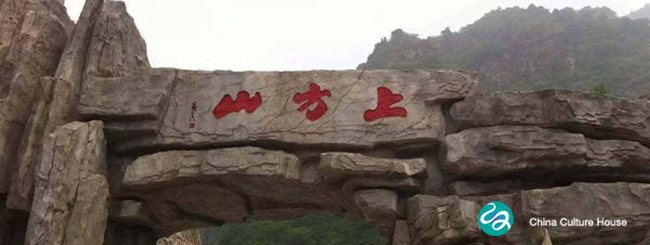BEIJING UPPER MOUNTAIN NATIONAL FOREST PARK
Shangshan National Forest Park is located in Fangshan District, Beijing, with an elevation of 860 meters, a total area of 340 hectares, a forest coverage of more than 90%, and 625 species of plants, including 20 varieties or variants. Among them, there are unique Chinese plants, such as monorhizoma, sandalwood, grasshopper legs, Anemarrhena and rare Ginkgo biloba oil. Botany.
Shangfangshan National Forest Park, which was built in 1992, is located in Fangshan District, in the southwest of Beijing’s sub urban area, 65 kilometers from downtown. Shangfangshan National Forest Park is a comprehensive multi-purpose scenic spot, integrating tallmountains, forests, caves, temples, springs, pavilions and karst landscape. It’s famous for its 9 karst caves, 12 peaks and 72 temples. The park is considered as one of the states’ top 20 model forest parks, and it has become a natural gymnasium in Southwest Beijing. Every year, a large number of touristss flock to the park to enjoy its beautiful mountain flowers in full bloom in spring, or avoid summer heat and appreciate bright red leaves in autumn.
Mountain: Shangfangshan is a branch mountain of Mt. Yan, whose highest peak is 860 meters above sea level. It has an abundance of vegetation, with the forest coverage rate of over 95%. The park has 12 mountains, among which, Mt. Tianzhu is the most spectacular. Standing on the mountain top, you can have a panoramic view of Shangfangshan.

Shangfangshan national forest park(10张)
Forests: Shangfangshan covers an area of 329.3 hectares, which is the only original secondary well reserved forest resources in North China. There are 645 species of plants and trees, such as orientalar borvitae, Chinese pines and oak trees. There are 51 types of first-class ancient and rare trees, such as 29 meter-tall and 1000-year-old cypress and banyan. There are 4,000 second-class ancient trees. The park is famous for its large variety of ancient and rare trees, which is one of the few ancient tree complexes in Beijing.
Karst Caves: Shangfangshan is also famous for abundant ancient caves among which, nine caves are the most spectacular. The nine famous caves are respectively Tianwang Cave (天王洞), Jiuhuan Cave (九环洞), Yanshou Cave (延寿洞), Yinyang Cave (阴阳洞), Huayan Cave (华严洞), Jingang Cave (金刚洞), Zhaoyang Cave (朝阳洞), Xifang Cave (西方洞) and Yunshui Cave (云水洞). Among those nine spectacular caves, Yunshui Cave ranked as the topflight one. It is the earliest cave that open to the public in North China. Just 1,400 years ago, there was the trace of human beings in Yunshui Cave. In Yunshui Cave, the natural landscape of stalactite, stalagmite and stalagnate looks as natural as it were living. In the second hall of the cave, there is a 38-meter-tall stalagmite which is regarded as an Optimus Prime.
Tiankeng (huge karst hollow) in Shangfangshan is the first Tiankeng discovered in North China, which is over 70 meters deep. Various plants live in this Tiankeng, besides, wood and bone fossils were also discovered there. Tiankeng has high value on scientific research and tourism.
The construction of temples in Shangfangshan dates back to the late period of the Eastern Han Dynasty. After the construction of successive dynasties, the temples there have formed on a large scale. At present, the temples and ruins count 72 in total. The main temple is Doushuai Temple (兜率寺) , which dates back to the Sui Dynasty, and the number of monk here reach up to 500 at its best. In the corridor of Sheli Hall, murals of the Ming Dynasty are well preserved, and there are also poems inscribed on the wall by the celebrities. Shangfangshan is also an ideal venue to experience Buddhism culture.

topography(12张)





